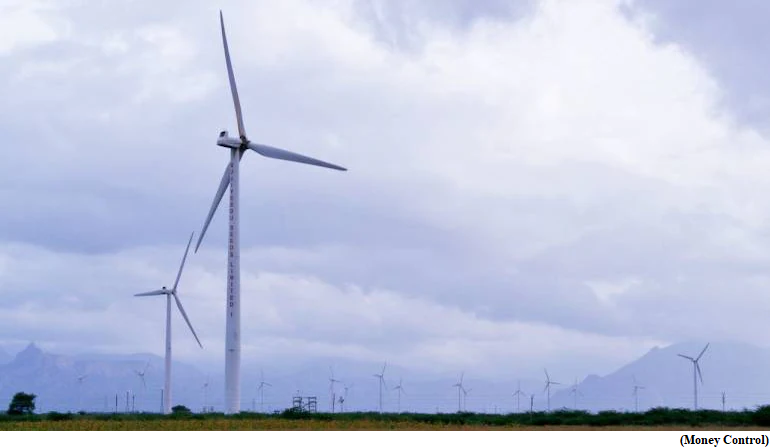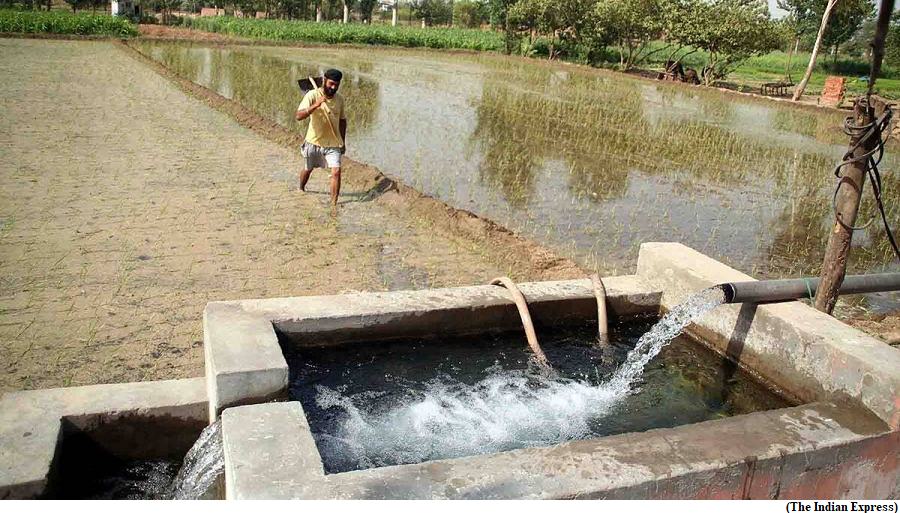Climate Crisis 6 key messages from IPCC Synthesis Report (GS Paper 3, Environment)

Why in news?
- Recently, the Intergovernmental Panel on Climate Change (IPCC) published its Synthesis Report (SYR).
- It summarises the findings of six reports released during its Sixth Assessment Cycle — the 1.5 C report of 2018, the Special Reports on Land and Oceans of 2019, and the three Assessment Reports published between 2021 and 2022.
Details:
- The SYR is presented in the wake of major global upheavals brought about by the COVID-19 pandemic, the Russian invasion of Ukraine and the subsequent global energy crisis.
- It also follows notable deliberations at the 27th Conference of Parties (COP27) to the United Nations Framework Convention on Climate in Egypt 2022, where a loss and damage fund for climate victims was written into existence, and discourse on issues such as fossil fuel phasedown and global financial system reform, was elevated.
Six key messages from Summary for Policymakers (SPM) of the SYR:
Excess emissions from human activities have raised global temperature by 1.1°C above 1850-1900:
Current policy action will lead to further temperature rise, and the impacts on human and other forms of life will become more severe:
- Nationally Determined Contributions (NDC) announced by countries till October 2021 make it likely that warming will exceed 1.5°C during the 21st century and make it harder to limit warming below 2°C.
- With every increment of global warming, climatic extremes will become more widespread and pronounced. The CO2 absorption capacity of land and ocean sinks is likely to decrease, ocean acidification is likely to increase, and compound heatwaves and droughts are projected to become more frequent.
- There may be some irreversible changes in the climate system when tipping points are reached, such as the loss of the Greenland and West Antarctic ice sheets. Adaptation options may reach their reach their limits of feasibility, leading to greater losses and damages.
At current emissions levels, the remaining carbon budget will be depleted:
- It is estimated that from the beginning of 2020, we were left with about 500 GtCO2 of the carbon budget for a 50 per cent likelihood of limiting global warming to 1.5°C.
- This is likely to be depleted if the annual CO2 emissions between 2020 and 2030 stayed, on average, at the same level as 2019.
Need to cut GHG emissions across all sectors urgently, within this decade and no later:
- To achieve the 1.5°C goal with a 50 per cent likelihood, we need rapid and deep and, in most cases, immediate GHG emissions reductions in all sectors this decade.
- GHG emissions must be cut by 43 per cent by 2030 compared to 2019 levels, and CO2 emissions must be cut by 48 per cent.
- This must be accompanied by reaching global net zero CO2 emissions in the early 2050s.
- Carbon dioxide removal (CDR) technologies can be deployed to reduce temperatures in case 1.5°C is overshot, but they come with “feasibility and sustainability concerns, and social and environmental risks” when deployed at large scales.
Need to shift to low-carbon economic systems:
- There is need for deep systemic changes across all economic sectors to reduce emissions on a sustained basis.
- Some of these include widespread electrification, diversifying energy generation to include more wind, solar, and small-scale hydropower, deploying more battery-powered electric vehicles, and conserving and restoring forests while also reducing tropical deforestation.
- The good news is that feasible, effective, and low-cost options for mitigation and adaptation are already available, with some differences across systems and regions.
Political commitment and equity are key to enabling this shift:
- Equity is central to climate resilient development. Adaptation and mitigation actions, that prioritise equity, social justice, climate justice, rights-based approaches, and inclusivity, lead to more sustainable outcomes, reduce trade-offs, support transformative change and advance climate resilient development.
- High income groups contribute disproportionately to emissions, and thereby have the highest potential for emissions reduction. Developing countries need technology development, transfer, capacity building and financing to ‘leapfrog’ to low-emissions systems and reap the co-benefits.
- This can be enabled by political commitment. Particularly for sectoral mitigation, regulatory instruments driven by governments can support deep emissions reductions; carbon pricing instruments on the other hand, which are market-based, have been less effective.
Significance:
- The SPM is a document prepared by IPCC scientific and technical experts in discussion with government representatives. As a result, the messages included in it are those considered politically palatable for all. The main text of the six underlying reports presents a more vast set of recommendations based on evidence and research.
- Yet, despite the political nature of the SPM, it provides an overview of where global climate system is at, and the broad policy-relevant measures that need to be taken to avert the worst of the crisis.
Wind energy generation can surge 4-5 times on policy tailwinds, add 6-8 GW annually: Report
(GS Paper 3, Environment)
Why in news?
- Positive policy moves by the New and Renewable Energy Ministry can crank up the annual wind capacity addition by 6-8 gigawatt (GW) from fiscal 2026, around 4 times more than 1.6 GW of growth clocked in the past five fiscals.

Reverse auction:
- According to a CRISIL analysis, the aggressive tariff bids in reverse auctions since fiscal 2018 has been one of the key drivers of the wind energy growth.
- The process led to discovery of irrationally low tariffs that were favoured by state distribution companies, but compromised returns left little incentives for developers to complete the projects. There were also delays in land acquisition and setting up of evacuation infrastructure.
- Under reverse auction, bidders compete on an open e-platform, adjust tariffs within timeframes with their quotes visible to all participants.
Background:
- Prior to FY18, wind projects were awarded under the feed-in-tariff regime, where payments at fixed tariffs were made by discoms to producers under long-term contracts without competitive bids.
- Only 41 per cent of projects awarded by the Solar Energy Corporation of India (SECI) during fiscals 2018-21 got commissioned till December 2022, while 23 per cent were cancelled and the remaining projects are delayed due to issues in land acquisition, and evacuation and supply-side constraints.
Key policy measures introduced:
- While the annual solar capacity addition averaged 8.3 GW in the five fiscals through 2022, wind capacities grew a meagre 1.6 GW per annum during this period. All that can change now with the ministry introducing four key policy measures in January.
- The first of these four major policy changes include setting a goal to award 8 GW of wind tenders per annum. This is significant because wind tendering has been low at just 3.3 GW per annum in the past five fiscals. This can propel capacity growth at a faster rate if executed well.
- Secondly, the Ministry has replaced the reverse auction process with a single stage, two-envelope closed bidding, which will curb irrational bidding. The agency now expects tariffs to rise 20-30 per cent over the recent Rs 2.89-2.94 per unit, which provides more than 10 per cent internal rate of return, due to the change in bidding process, resource variability at newer sites etc.
- Thirdly, to ensure that higher wind power tariffs are conducive for state discoms, the Ministry mandated that all discovered renewable tariffs for each state will be pooled and offered to discoms at an average pooled tariff by an intermediary such as the SECI. This will lower the risk for wind projects because the SECI fares significantly better than state discoms in terms of payments.
- Finally, to ensure discipline in terms of timely project completion, the Ministry notified that bank guarantees of developers will be revoked if they delayed project completion by more than a year beyond the scheduled commissioning date. Also, the developers delaying projects beyond 18 months will be barred for five years.
Way Forward:
- According to CRISIL, considering 8 GW of bidding in fiscal 2024 and 20-24 months to commission, around 6-8 GW capacity can be installed every year starting FY26, provided the policy push continues at the same pace.
- The step-up in wind power generation is crucial to the country's energy transition goals despite it being costlier than solar.
- That's because wind projects can provide electricity even during the night to meet peak power requirements, which balances out day-centric solar generation on the grid. Hence, it forms an important part of round-the-clock power supply set-up as desired by discoms.
House panel suggests prepaid cards for power to save groundwater
(GS Paper 3, Environment)
Why in news?
- Recently, a Parliamentary Standing Committee on Water Resources tabled its report titled, “Groundwater: A Valuable but Diminishing Resource”, in the Parliament.

Restriction on power subsidy:
- The committee observed that while restricting free electricity to the farmers will certainly reduce the misuse of groundwater, both the Department of Water Resources, River Development and Ganga Rejuvenation and Department of Agriculture and Farmers Welfare “have expressed inability to persuade states to reduce/stop subsidy for power given in agriculture as electricity is a concurrent subject and SERCs determine the electricity tariff for retail supply of electricity to end consumers under the extant provisions of Electricity Act, 2003”.
- It said that States like Punjab, Haryana, Telangana and Tamil Nadu offer completely free power, while other states have provision for collection of token charges.
- It said that use of electric pumps needs to be further discouraged by introducing measures such pre-paid cards for power supply and restricting power supply to few hours a day.
- It has recommended that the Department of Water Resources, River Development and Ganga Rejuvenation under Jal Shakti Ministry should take the initiative by urging both the Power Ministry and Department of Agriculture and Farmers Welfare along with state governments to take measures on the suggested lines.
Positive Initiatives:
- The Committee, however, note that Punjab introduced a scheme by way of which farmers were refunded money if they consumed less electricity.
- They further note that under Deendayal Upadhyay Gram Jyoti Yojana of Ministry of Power, separate component of agriculture and non-agriculture feeders have been created for facilitating judicious rostering of supply to agriculture & non-agriculture consumers in rural areas.
Over-extraction of groundwater:
- The Committee notice that over-extraction of groundwater for meeting irrigation needs is prevalent mainly in northern states, particularly in Punjab, Haryana and Rajasthan, which are extracting 97%, 90% and 86% of groundwater, respectively, for this purpose.
- Other states such as Karnataka, Tamil Nadu and Uttar Pradesh are also significant users of groundwater for irrigation as they are using approximately 89%, 92% and 90%, respectively, of their total groundwater extraction for agricultural purposes.
- Main reason for such over exploitation of ground water is due to wide cultivation of water guzzler paddy and sugarcane crops which are heavily incentivized by way of highly subsidized pricing of water, power, fertilizers on one hand and assured markets for their outputs through procurement of rice in Punjab-Haryana belt and of sugarcane by sugar factories at government determined prices.
Recommendations:
- The Committee recommended devising integrated measures for adoption in agriculture, to reduce dependence on Ground water in agriculture.
- The committee also said that there is a need for shift in focus from ‘land productivity’ to ‘water productivity’.
- The Committee recommended the Ministry of Jal Shakti to work out a policy to ensure judicious water use not only to reduce dependence on groundwater but to reduce its footprint in agriculture.
- In this regard, the Committee emphasised that in addition to land productivity, water productivity i.e. production per cubic meter of water should be a major criteria in decisions relating to crop production.
Way Forward:
- The Ministry of Jal Shakti should engage with Agriculture Ministry to enable formulation of appropriate policy decisions relating to crop production in the country.




